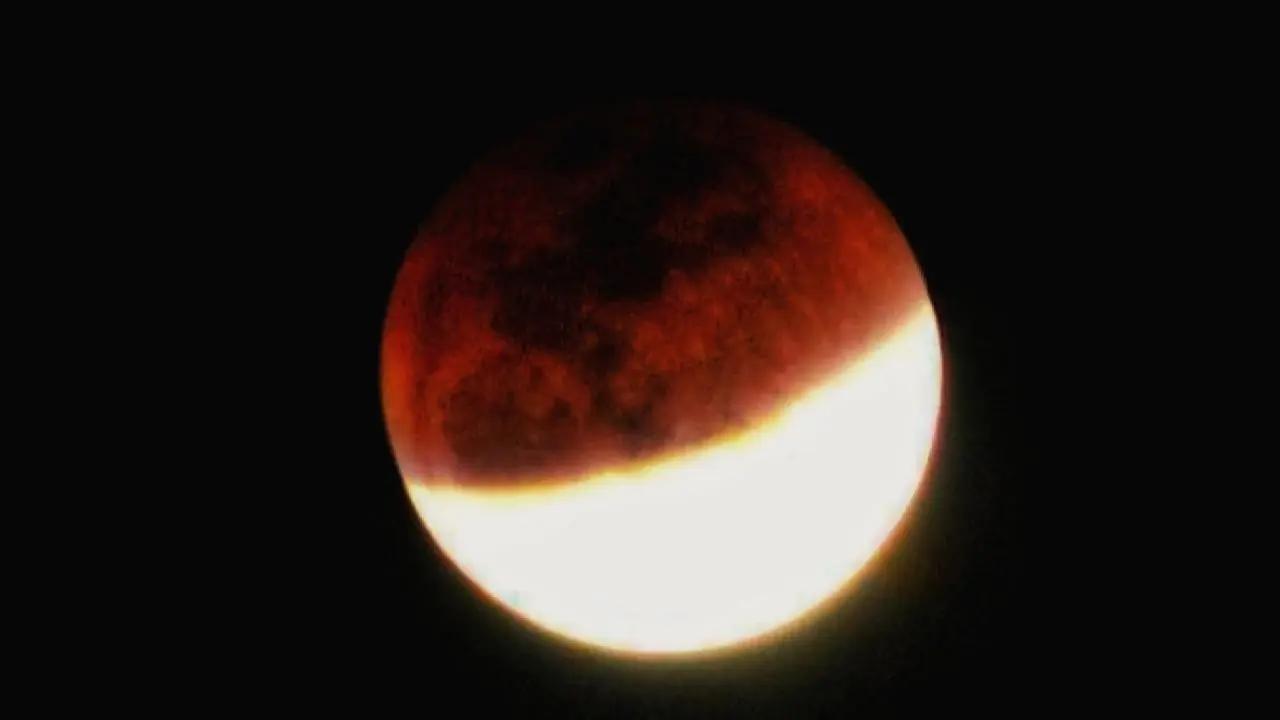Lunar Eclipse 2023 in India: A Lunar Eclipse occurs during a full moon when the Earth positions itself between the Sun and the Moon, resulting in the alignment of all three celestial bodies

File Pic
The Lunar Eclipse, also known as Chandra Grahan in India, is set to occur on October 28, 2023. From a scientific perspective, a Lunar Eclipse occurs during a full moon when the Earth positions itself between the Sun and the Moon, resulting in the alignment of all three celestial bodies. A total lunar eclipse occurs when the entire moon is enveloped within the Earth's umbral shadow, while a partial lunar eclipse occurs when only a portion of the moon falls under the Earth's shadow.
ADVERTISEMENT
Here’s everything you need to know about the upcoming Lunar Eclipse 2023 in India.
Lunar Eclipse 2023 in India: Timings and visibility of the lunar eclipse in India
The partial lunar eclipse is scheduled to commence on Saturday, October 28, and extend into Sunday, October 29.
According to Press Information Bureau (PIB), a partial lunar eclipse will occur on October 28-29, 2023 (6-7 Kartika, 1945 Saka Era). Though the Moon will enter penumbra at midnight on October 28, the umbral phase will start in the early hours of October 29. The Eclipse will be visible from all places of India around midnight. The eclipse will be visible in the region covering the Western Pacific Ocean, Australia, Asia, Europe, Africa, eastern South America, northeastern North America, the Atlantic Ocean, the Indian Ocean and the South Pacific Ocean.
In India, the eclipse will commence at around 11:31 PM. By approximately 1:05 AM on Sunday (Indian Standard Time - IST), the darker portion of the Earth's shadow, known as the umbra, will envelop the lunar surface. The lunar eclipse on Sunday, October 29, will start at 1:05 AM and conclude at 2:24 AM.
The last lunar eclipse which was visible from India was on November 8, 2022, and it was a total eclipse.
Lunar Eclipse 2023 in India: How to watch the Lunar Eclipse
In contrast to a solar eclipse, a lunar eclipse is entirely safe to observe with the naked eye. You don't need any special equipment, although using binoculars or a telescope can enhance your viewing experience and make the moon's reddish hue more pronounced. To ensure the best viewing, it's advisable to position yourself in a dark location, away from the influence of bright lights, to fully appreciate this celestial event.
 Subscribe today by clicking the link and stay updated with the latest news!" Click here!
Subscribe today by clicking the link and stay updated with the latest news!" Click here!







